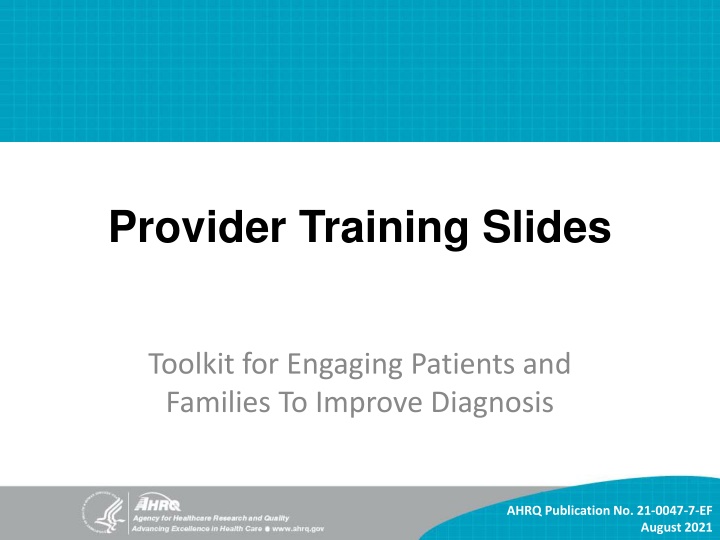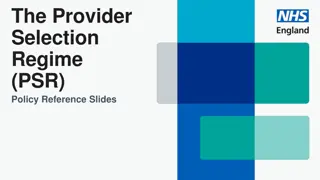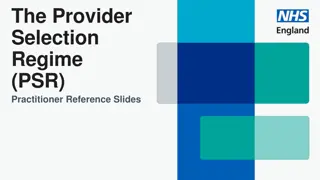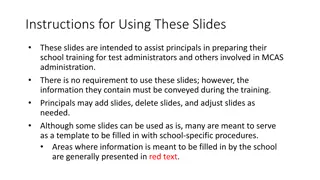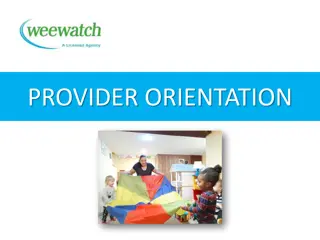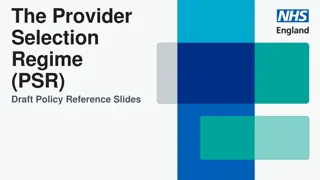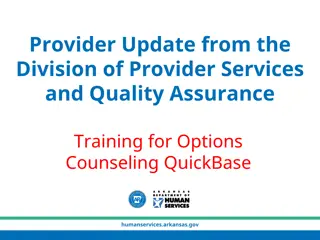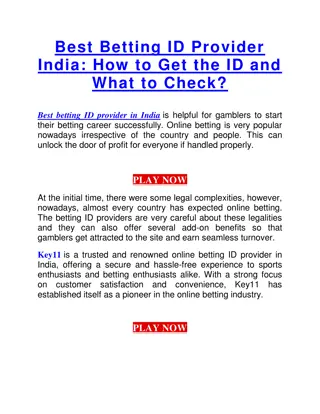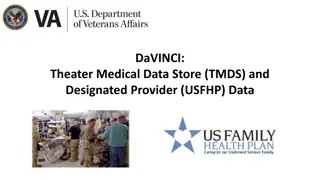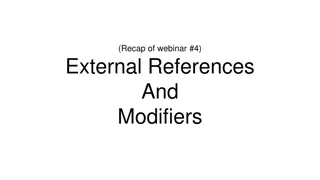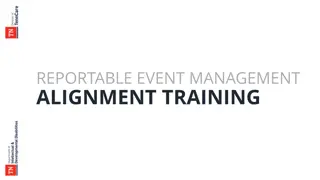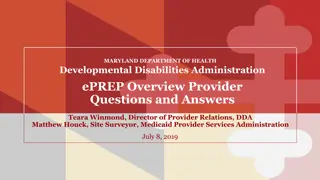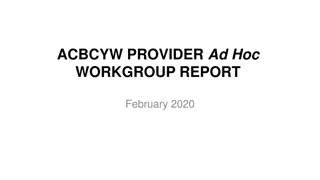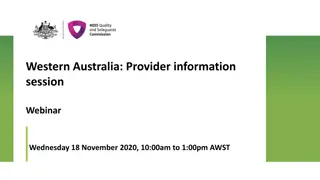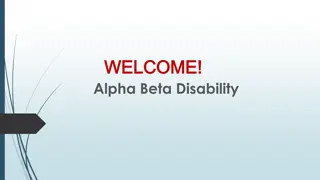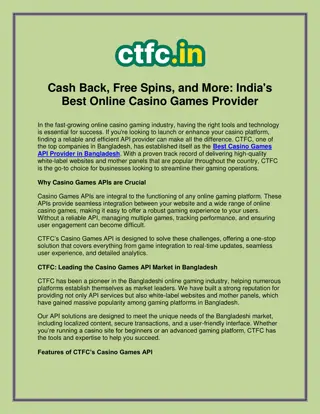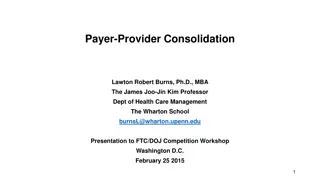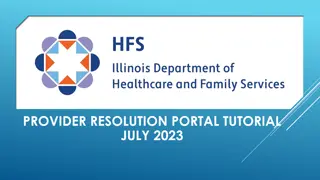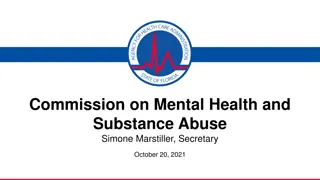Provider Training Slides
Engage patients effectively to prevent diagnostic errors. Learn the impact of active listening, avoid interruptions, and cultivate empathy. Practice exercises and get tips for improving communication skills.
Download Presentation

Please find below an Image/Link to download the presentation.
The content on the website is provided AS IS for your information and personal use only. It may not be sold, licensed, or shared on other websites without obtaining consent from the author.If you encounter any issues during the download, it is possible that the publisher has removed the file from their server.
You are allowed to download the files provided on this website for personal or commercial use, subject to the condition that they are used lawfully. All files are the property of their respective owners.
The content on the website is provided AS IS for your information and personal use only. It may not be sold, licensed, or shared on other websites without obtaining consent from the author.
E N D
Presentation Transcript
Provider Training Slides Toolkit for Engaging Patients and Families To Improve Diagnosis AHRQ Publication No. 21-0047-7-EF August 2021
"Just listen to your patient, he is telling you the diagnosis."1 - Sir William Osler
Reasons for Diagnostic Error This breakdown in collaborative communication may result in assumptions and premature closure.4 Patients are interrupted when telling their illness story to providers within 11-18 seconds.2,3 These breakdowns lead to diagnostic error in about1 of every 20 patients you see.5
An Eloquent Silence "I had previously been an attentive listener but now he felt I wasn t listening as well." - Provider
How Does 60 Seconds To Improve Diagnostic Safety Work?
How Do I Get Started? Ask What brings you in today? I would like to hear from you about how you are doing. Listen Actively listen, encouraging engagement with "uh huhs" Write notes and make eye contact to show you are listening. Act Use the information shared to cocreate a care plan. Ask additional questions to clarify information shared.
Exercise 1: WHAT DOES 60 SECONDS FEEL LIKE?
Be Silent for 60 Seconds Get comfortable. Put away phones and other distractions. Close your eyes.
Tips for Effective Listening Listen for meaning. Pay attention to body language. Cultivate empathy. Avoid making judgments. Look into others' eyes when they're speaking. Pay attention to the feelings associated with the words.
Be Ready To... Listen without filters or bias. Reflect on what you hear. Clarify what you hear. Defer judgment. Respond appropriately.
Exercise 2: WHAT INFORMATION CAN BE SHARED AND RETAINED IN 60 SECONDS?
Listening for Retention Blank piece of paper Pen or pencil Listen for 30 seconds Write for 30 seconds
Which words did you remember? itch rash red swelling hot warm rash rough bumps blisters seeps oozes rash scrape abrasion bruise hard leaks scab prickle
Evaluating the Impact Documenting 60 Seconds To Improve Diagnostic Safety Measuring the impact of the toolkit Customize this slide to match your practice's implementation strategy.
Tips for Success My patient has too many problems for one visit. My patient is talking too much. How should I document? How can I get patients to open up? How do I time the 60 Seconds? Customize this slide to match your practice's implementation strategy.
Next Steps: Small Tests of Change Try giving the first minute of your encounter to the patient for the next 2 weeks. This will take some adjustments for you and your patient. Give it time. Practice the listening and reflective practice skills we have discussed today. Let's debrief during our next meeting. Customize this slide to match your practice's implementation strategy.
References 1. 2. Bliss M. William Osler: A Life in Medicine. Oxford, UK: Oxford University Press; 2000. Singh Ospina N, Phillips KA, Rodriguez-Gutierrez R, Castaneda-Guarderas A, Gionfriddo MR, Branda ME, Montori VM. Eliciting the patient s agenda - secondary analysis of recorded clinical encounters. J Gen Intern Med. 2019;34(1):36-40. https://www.ncbi.nlm.nih.gov/pmc/articles/PMC6318197/. Accessed July 19, 2021. Shields CG, Epstein RM, Fiscella K, Franks P, McCann R, McCormick K, Mallinger JB. Influence of accompanied encounters on patient-centeredness with older patients. J Am Board Fam Pract. 2005;18(5):344-54. https://www.jabfm.org/content/18/5/344.long. Accessed July 19, 2021. Singh H, Giardina TD, Meyer AN, Forjuoh SN, Reis MD, Thomas EJ. Types and origins of diagnostic errors in primary care settings. JAMA Intern Med. 2013;173(6):418-425. https://www.ncbi.nlm.nih.gov/pmc/articles/PMC3690001/. Accessed July 19, 2021. Committee on Diagnostic Error in Health Care; Board on Health Care Services; Institute of Medicine; The National Academies of Sciences, Engineering, and Medicine. Improving Diagnosis in Health Care. Balogh EP, Miller BT, Ball JR, eds. Washington, DC: National Academies Press; 2015. https://www.ncbi.nlm.nih.gov/books/NBK338596/. Accessed July 19, 2021. Bartels J, Rodenbach R, Ciesinski K, Gramling R, Fiscella K, Epstein R. Eloquent silences: a musical and lexical analysis of conversation between oncologists and their patients. Patient Educ Couns. 2016 Oct;99(10):1584-94. https://www.ncbi.nlm.nih.gov/pmc/articles/PMC6100772/. Accessed July 19, 2021. Ofri D, Trimboli O. Deep Listening: Impact Beyond Words - Why Your Doctor Needs To Listen Deeply. https://www.oscartrimboli.com/podcast/044/. Accessed July 19, 2021. 3. 4. 5. 6. 7.
References 8. Zulman DM, Haverfield MC, Shaw JG, Brown-Johnson CG, Schwartz R, Tierney AA, Zionts DL, Safaeinili N, Fischer M, Thadaney Israni S, Asch SM, Verghese A. Practices to foster physician presence and connection with patients in the clinical encounter. JAMA. 2020 Jan 7;323(1):70-81. Erratum in: JAMA. 2020 Mar 17;323(11):1098. https://pubmed.ncbi.nlm.nih.gov/31910284/. Accessed July 19, 2021. Goss AL. How becoming a doctor made me a worse listener. JAMA. 2020;323(11):1041. https://doi.org/10.1001/jama.2020.2051. Accessed July 19, 2021. 10. Swendiman RA. Deep listening. Acad Med. 2014;89(6):950. https://doi.org/10.1097/ACM.0000000000000238. Accessed July 19, 2021. 11. Doyle A. Important Active Listening Skills and Techniques. New York, NY: The Balance Careers; 2019. https://www.thebalancecareers.com/active-listening-skills-with-examples-2059684. Accessed July 19, 2021. 12. Schwartz A, Weiner SJ, Weaver F, Yudkowsky R, Sharma G, Binns-Calvey A, Preyss B, Jordan N. Uncharted territory: measuring costs of diagnostic errors outside the medical record. BMJ Qual Saf. 2012;21(11):918- 24. https://pubmed.ncbi.nlm.nih.gov/22773889/. Accessed July 19, 2021. 13. Weiner SJ, Schwartz A, Weaver F, Goldberg J, Yudkowsky R, Sharma G, Binns-Calvey A, Preyss B, Schapira MM, Persell SD, Jacobs E, Abrams RI. Contextual errors and failures in individualizing patient care: A multicenter study. Ann Intern Med. 2010;153(2):69-75. https://www.acpjournals.org/doi/10.7326/0003- 4819-153-2-201007200-00002. Accessed July 19, 2021. 9.
